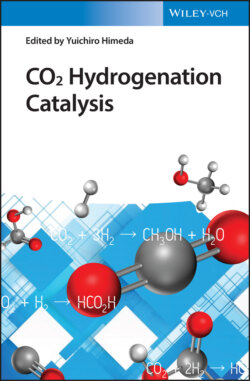Читать книгу CO2 Hydrogenation Catalysis - Группа авторов - Страница 15
1.3.2 Methanol
ОглавлениеMethanol, the industrial production of which is mainly from syngas, is in high global demand as a fuel and bulk chemical (Figure 1.3) [17]. One ton of methanol produced by the established process consumes 37.5 GJ of natural gas and emits 1.49 ton of CO2 [18]. In 2018, the global production of methanol was approximately 91.7 Mton, and since 2015, its production has grown by approximately 16% [16]. Approximately 26% and 8% of the methanol produced worldwide is consumed to produce formaldehyde and acetic acid, respectively, as the conventional demands. Methanol can be used as a fuel for internal combustion engines and fuel cells because it has a comparably high‐octane number of 113 and a density approximately half that of gasoline. In addition, methanol can be transformed into gasoline through the methanol‐to‐gasoline (MTG) process developed by Mobil in the 1970s [19]. Another growing market for methanol is the production of light olefins (i.e. ethylene (152 Mton yr−1) and propylene (103 Mton yr−1) in 2017), [20] which are monomer feedstocks for polyethylene and polypropylene as basic products of the plastics industry [21]. The concept of a so‐called methanol economy was independently proposed by Olah and Asinger due to the chemical's promising characteristics for use as an energy vector and chemical feedstock [22–24]. Therefore, the production of methanol by CO2 conversion is regarded as an attractive and potentially profitable route for CO2 utilization.
Figure 1.3 Global methanol demand in 2018.
Source: Data from Global methanol demand (Methanol Institute) [16].
